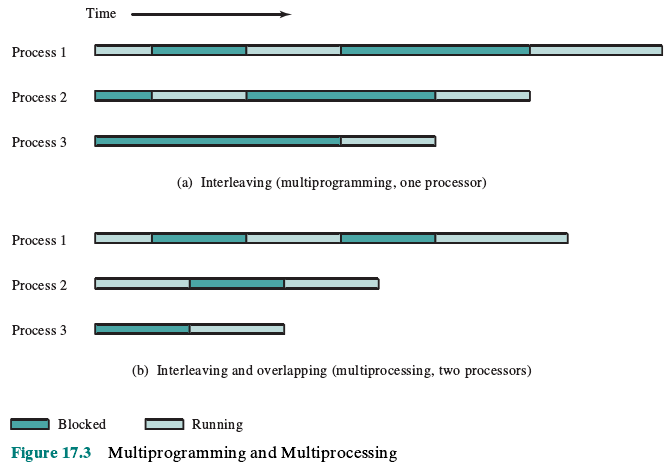COMPUTER ORGANIZATION AND ARCHITECTURE DESIGNING FOR PERFORMANCE NINTH EDITION
As demands for perfor-
mance increase and as the cost of microprocessors continues to drop, vendors have
introduced systems with an SMP organization. The term SMP refers to a computer
hardware architecture and also to the operating system behavior that reflects that
architecture. An SMP can be defined as a standalone computer system with the fol-
lowing characteristics:
1. There are two or more similar processors of comparable capability.
2. These processors share the same main memory and I/O facilities and are inter-
connected by a bus or other internal connection scheme, such that memory
access time is approximately the same for each processor.
3. All processors share access to I/O devices, either through the same channels
or through different channels that provide paths to the same device.
4. All processors can perform the same functions (hence the term symmetric).
5. The system is controlled by an integrated operating system that provides inter-
action between processors and their programs at the job, task, file, and data
element levels.
The operating system of an SMP schedules processes or threads across all of
the processors. An SMP organization has a number of potential advantages over a
uniprocessor organization, including the following:
• Performance: If the work to be done by a computer can be organized so that
some portions of the work can be done in parallel, then a system with multiple
processors will yield greater performance than one with a single processor of
the same type (Figure 17.3).

• Availability: In a symmetric multiprocessor, because all processors can
perform the same functions, the failure of a single processor does not
halt the machine. Instead, the system can continue to function at reduced
performance.
• Incremental growth: A user can enhance the performance of a system by add-
ing an additional processor.
• Scaling: Vendors can offer a range of products with different price and perform-
ance characteristics based on the number of processors configured in the system.
It is important to note that these are potential, rather than guaranteed, benefits.
The operating system must provide tools and functions to exploit the parallelism in
an SMP system.
An attractive feature of an SMP is that the existence of multiple processors is
transparent to the user. The operating system takes care of scheduling of threads or
processes on individual processors and of synchronization among processors.